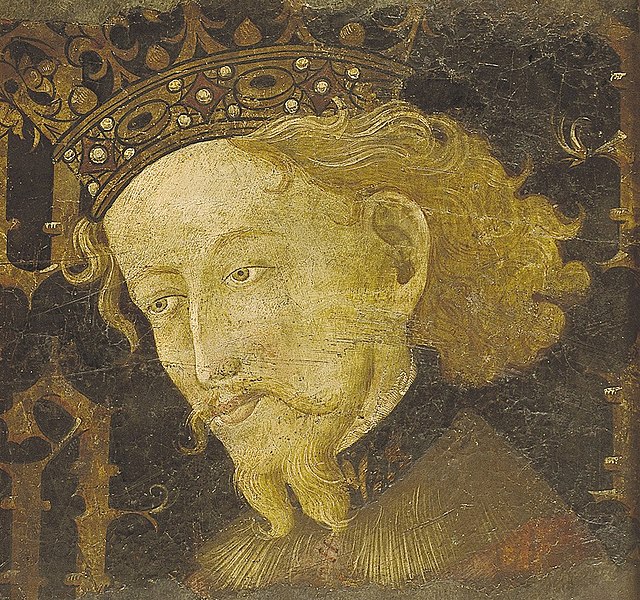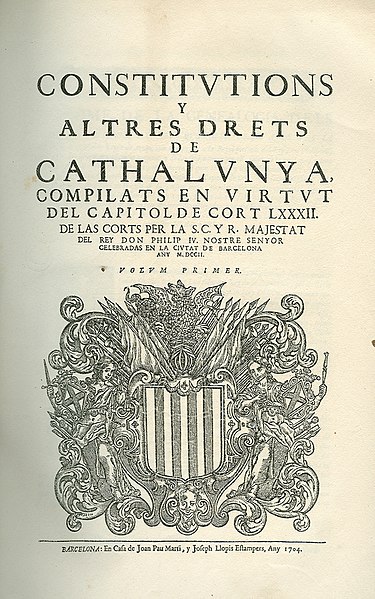Principality of Catalonia
The Principality of Catalonia was a medieval and early modern state in the northeastern Iberian Peninsula. During most of its history it was in dynastic union with the Kingdom of Aragon, constituting together the Crown of Aragon. Between the 13th and the 18th centuries, it was bordered by the Kingdom of Aragon to the west, the Kingdom of Valencia to the south, the Kingdom of France and the feudal lordship of Andorra to the north and by the Mediterranean Sea to the east. The term Principality of Catalonia was official until the 1830s, when the Spanish government implemented the centralized provincial division, but remained in popular and informal contexts. Today, the term Principat (Principality) is used primarily to refer to the autonomous community of Catalonia in Spain, as distinct from the other Catalan Countries, and usually including the historical region of Roussillon in Southern France.
Wilfred the Hairy, depicted in the Genealogy of the Kings of Aragon, c. 1400
Petronilla of Aragon and Ramon Berenguer IV, Count of Barcelona, dynastic union of the Crown of Aragon. 16th-century painting by Filippo Ariosto
James I the Conqueror
1702 compilation of Catalan Constitutions
The Kingdom of Aragon was a medieval and early modern kingdom on the Iberian Peninsula, corresponding to the modern-day autonomous community of Aragon, in Spain. It should not be confused with the larger Crown of Aragon, which also included other territories—the Principality of Catalonia, the Kingdom of Valencia, the Kingdom of Majorca, and other possessions that are now part of France, Italy, and Greece—that were also under the rule of the King of Aragon, but were administered separately from the Kingdom of Aragon.
The historical banner of Aragon
Petronilla of Aragon, and Ramon Berenguer IV, Count of Barcelona depicted later in a 16th-century painting
Aljafería Palace






